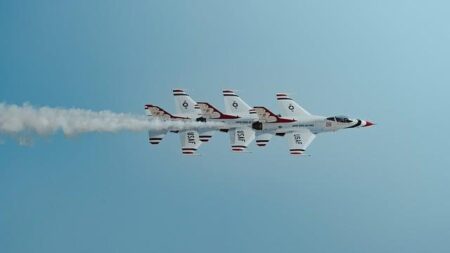Ukraine’s recent drone attack has been described as a “humiliation” that exposes significant tactical weaknesses within Russia’s military operations, NBC News reports. The strike, which targeted key Russian positions, underscores growing vulnerabilities in Russia’s defense capabilities amid the ongoing conflict. Analysts suggest that the successful use of drones by Ukrainian forces not only challenges Russia’s strategic posture but also signals a shift in the dynamics of the battlefield. This development raises critical questions about Moscow’s ability to adapt to emerging technologies and maintain control over contested areas.
Ukraine’s Drone Attack Exposes Critical Flaws in Russian Defense Systems
The recent drone strike executed by Ukrainian forces has sharply highlighted significant vulnerabilities within Russian defense infrastructure. Despite Russia’s extensive air defense network, the ability of relatively low-cost drones to penetrate and inflict damage reveals lapses in surveillance and interception protocols. Experts suggest that this incident is not just a tactical setback but a glaring indication of outdated systems struggling to contend with modern, asymmetric warfare technologies.
Key issues identified include:
- Inadequate detection ranges against small, low-flying drones
- Delayed command responses to unexpected aerial threats
- Limited integration between radar systems and counter-drone measures
| Defense System | Estimated Effectiveness | Observed Weak Points |
|---|---|---|
| S-400 Surface-to-Air | High (against aircraft and missiles) | Less effective vs. drones |
| Electronic Warfare Units | Moderate | Insufficient drone jamming range |
| Radar Surveillance | Variable | Difficulty tracking low signatures |
Analyzing the Tactical Failures Behind Russia’s Vulnerability to Drone Strikes
Russia’s recent susceptibility to drone strikes has exposed significant flaws in its battlefield tactics and defensive strategies. Despite advanced military technology, there appears to be a critical underestimation of drone warfare’s evolving role in modern conflicts. Key vulnerabilities include:
- Insufficient air defense coverage: Russian forces have struggled to deploy layered defenses capable of detecting and neutralizing low-flying, small UAVs across contested zones.
- Lack of electronic warfare integration: Failed or delayed jamming and signal interception have allowed Ukrainian drones to operate with relative freedom over enemy lines.
- Static and predictable positioning of critical assets: Concentrated base locations and logistic hubs have become easy targets without adequate mobility or camouflage.
These tactical shortcomings have been compounded by command and control inefficiencies, with frontline units reportedly unable to respond quickly enough to emerging aerial threats. The following table illustrates a comparison of estimated response times and detection capabilities before and after the drone strikes:
| Metric | Before Drone Strikes | After Drone Strikes |
|---|---|---|
| Response Time to UAV Threat | 30+ minutes | 5-8 minutes |
| Detection Success Rate | 40% | 75% |
| Electronic Jamming Effectiveness | Limited | Improving but inconsistent |
Strengthening Air Defense Protocols Key to Preventing Future Humiliations
Russia’s recent setbacks highlight glaring deficiencies in the effectiveness and responsiveness of its existing air defense systems. The exploited vulnerabilities suggest that outdated detection technologies and slow decision-making processes allowed Ukraine’s drone attack to penetrate critical zones undeterred. Experts emphasize that without immediate and sustained enhancements, these tactical shortcomings may invite further strategic embarrassments on the battlefield.
Addressing this challenge requires a multi-layered approach centered on technological innovation and procedural reforms:
- Upgrading radar capabilities: Integrating advanced sensors capable of detecting low-altitude, small-drone profiles.
- Streamlining command response: Simplifying communication channels to reduce reaction time during aerial threats.
- Implementing counter-drone measures: Deploying electronic warfare systems tailored specifically for unmanned aerial systems.
| Aspect | Current Status | Recommended Improvement |
|---|---|---|
| Detection | Limited range, vulnerable to stealth drones | Expand radar frequency spectrum usage |
| Reaction Time | Delayed relay and decision protocols | Automated alert systems with AI assistance |
| Countermeasures | Basic missile and gun systems | Advanced electronic jamming and drone interceptors |
Future Outlook
As Ukraine continues to leverage drone technology to challenge Russian forces, the recent attack underscores significant vulnerabilities within Russia’s military defenses. Analysts suggest that this setback not only marks a tactical embarrassment for Moscow but also signals potential shifts in the conflict’s dynamics. As the situation evolves, both sides appear poised to adapt their strategies in response to emerging threats on the battlefield, with implications that could reverberate beyond the immediate conflict zone.




